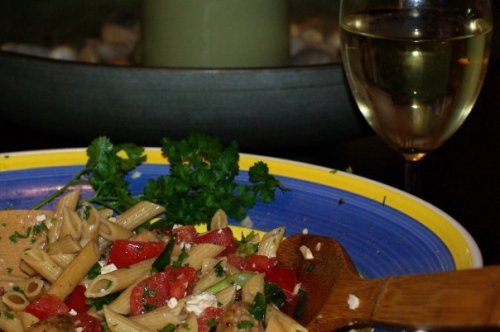I was asked to settle a debate this week and while I’m uncertain whether it was my food knowledge, my part Irish heritage, or simply my well known penchant for eating food that led them to me, I was more than happy to throw in my two cents. The question was “Is corned beef really Irish?” In fact, I told them, it is Irish but the tradition of eating corned beef and cabbage on St Patty’s day is uniquely American.
Historically corned beef (named so because the salt used in the process resembled corn kernels) or salt cured beef was an export of Ireland but rarely ever was it eaten by the locals. In those days Beef was generally too expensive for the common people and a dish of boiled “bacon” and cabbage was much more customary. What they called “bacon” was pretty much any part of the pig, other than the ham, that contained a joint…typically what we know as the shoulder or the loin.
Later, when Irish immigrants came to America, beef was actually far more available than pork so they “corned” the beef and cooked it with cabbage in an effort to replicate their comfort food from back home. Loosely, this is assumed to be the origin of the wholly American tradition of corned beef & cabbage on St. Patrick’s Day. Interestingly, to this day, corned beef and cabbage in Ireland is generally reserved for the tourists!
For a great read on the subject check out Europeancuisines.com .
Through the years I tried every method known to man for preparing corned beef including boiling, stove-top braising, baking and most recently sous vide. For depth of flavor and melt-in-your-mouth tenderness, this slow oven braise remains my go-to recipe for corned beef. Make enough for leftovers because the sandwiches are awesome and the chopped meat makes for an incredible corned beef hash!
Beer Braised Corned Beef Brisket & Cabbage
1 – 3 to 4 pound First cut corned beef (**See note)
1 or 2 cans – Guinness draft
10 to 12 – Mixed peppercorns (pink, green, black, etc…)
6 to 8 – Cloves of garlic, smashed
4 to 6 – Allspice berries
2 to 3 – Bay leaves
1 to 2 – Star anise pods
Note: Reserve vegetables for later. These can be added and cooked with the roast for the final hour of cooking or boiled in the pot juices while the roast rests.
1 Head – Green or Napa cabbage, quartered
3 to 4 Large, or 4 to 6 Med – Red bliss potatoes
2 Med – White onions, halved
Pre-heat the oven to 300 degrees. Remove the corned beef from its packaging and rinse in cold water while rubbing with your hands to remove any scum left over from the brine. Place the roast, fatty side up, in a heavy-bottomed Dutch oven (or a pot with a tight fitting lid) and pour in enough beer to come about 1/3 of the way up the sides, sliding the roast around a little to get some liquid underneath. Add the remaining ingredients, distributing them evenly around the beef (if your roast is larger add more / if it is smaller add less of the spice).
Note: If your Corned Beef comes with a spice packet add that too…flavor is flavor!
On your stovetop over medium heat, bring the beer to a gentle boil then cover the pot tightly with aluminum foil placing the Dutch oven lid on top of that for a nice firm seal. Place the whole thing in the oven and roast, without peeking for 3 – ½ to 4 hours again depending on the size. The beef should be very tender after 4 hours…if not put it back in the oven and check it every 30 minutes until it is very tender.
Remove the corned beef and wrap it in the foil to rest. Meanwhile, place quartered cabbage (cut side down), red bliss potatoes, and white onion halves in the cooking liquid, return to a boil, cover and cook for 15 minutes while the Corned Beef is resting. After 15 to 20 minutes of rest, slice the Corned Beef, across the grain and serve with vegetables and your favorite Dijon Mustard.
**Note: Corned beef is generally sold as Whole Brisket, Half Brisket – First Cut (or Flat), or Half Brisket – Point Cut. The first cut (or Flat) is my favorite. This cut comes from the wide flat half of the whole brisket with the Point Cut coming from the thicker, fattier end of the Brisket. The First Cut is generally leaner and more suitable for the dinner plate. The Point Cut is “generally” fattier and more suitable for sandwiches. Hence, most of the time when you see a sale on corned beef it will be the Point Cut. Do yourself a favor and stick with the First Cut.
Enjoy,
Randy







